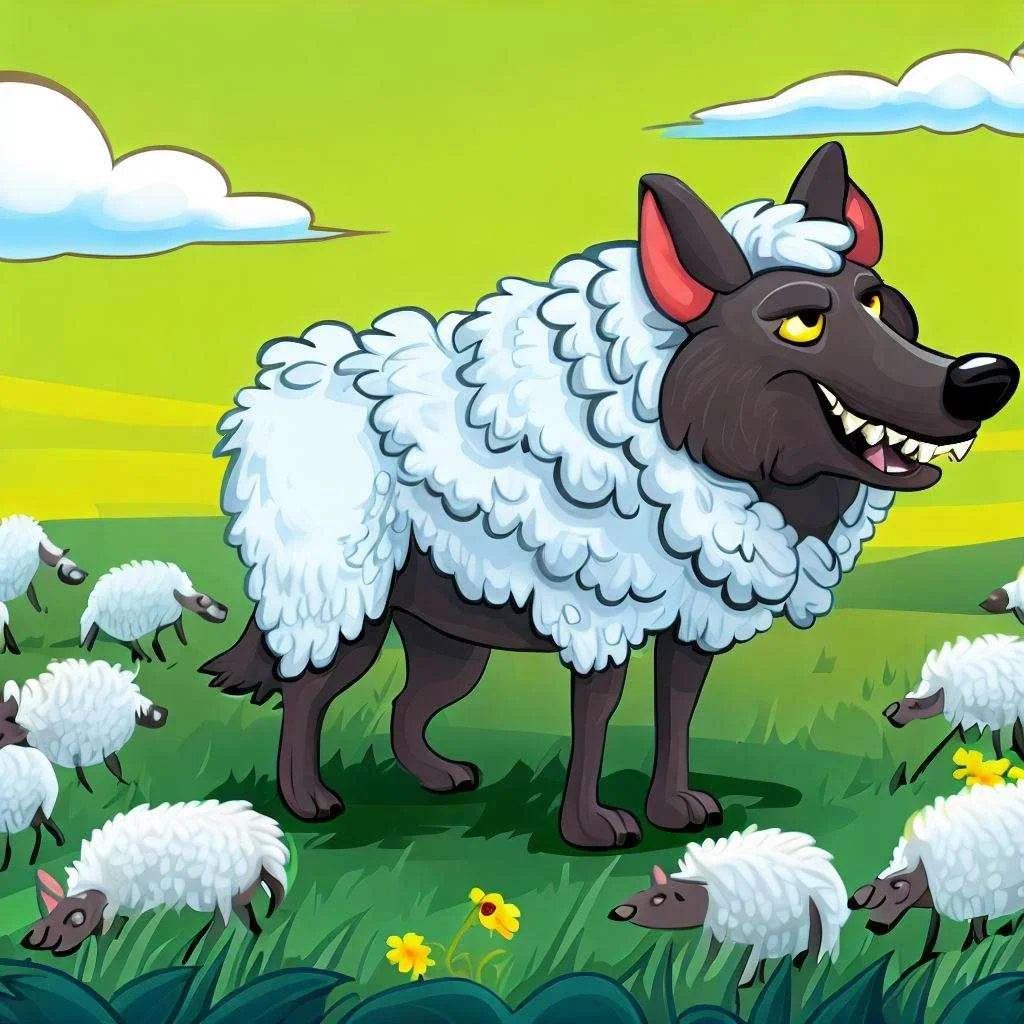The Wolf in Sheep’s Clothing moral story stands out as a timeless lesson on trust and appearances.
This ancient fable warns readers to be wary of those who might hide their true intentions.
But what deeper insights can we glean from this tale? Dive in to discover the profound wisdom embedded in this classic narrative.
On the outskirts of a serene village, the sheep grazed peacefully, unaware of the hungry eyes that watched them from the forest edge. The wolf, having failed many times to capture a sheep, hatched a plan.
One evening, he stumbled upon the lifeless body of a sheep, a victim of natural causes. An idea struck him. “What if I wore its skin and mingled amongst them?” he thought.
Slipping into the woolly coat, he walked cautiously into the flock the next day. To his delight, none of the sheep noticed anything amiss. They continued grazing, oblivious to the danger amidst them.
“Ah, this is too easy!” he whispered to himself, restraining his urge to pounce right away. He decided to wait for nightfall.
As the sun dipped below the horizon, one of the older sheep addressed the group. “Gather round, my friends. We’ll huddle together for warmth.”
The wolf, still in disguise, inched closer to a young, plump sheep. Just as he was about to strike, a shepherd’s dog barked loudly and lunged towards him, having sensed the deceit.
The wolf, in a panic, tried to run but stumbled in the unfamiliar woolly disguise, giving the dog enough time to chase him away.
The sheep, realizing the danger they had narrowly escaped, bleated in gratitude to their vigilant protector.
Moral of the Story
Appearances can be deceptive; not everything is as it seems. Always be cautious of those who try to hide their true intentions.
What’s the meaning of “wolf in sheep’s clothing”
The phrase “a wolf in sheep’s clothing” refers to someone who pretends to be harmless and kind but is actually dangerous and deceitful.
The expression originates from one of Aesop’s Fables The Wolf in Sheep’s Clothing, where a wolf disguises himself in a sheep’s skin to get close to a flock of sheep, with the intention of catching them more easily.
In everyday use, when we call someone a wolf in sheep’s clothing, we’re warning others that the person may seem friendly or trustworthy on the outside, but they have ulterior motives that are not so benevolent.
It’s a reminder to not always take people at face value and to be cautious of individuals who might be hiding their true intentions.

